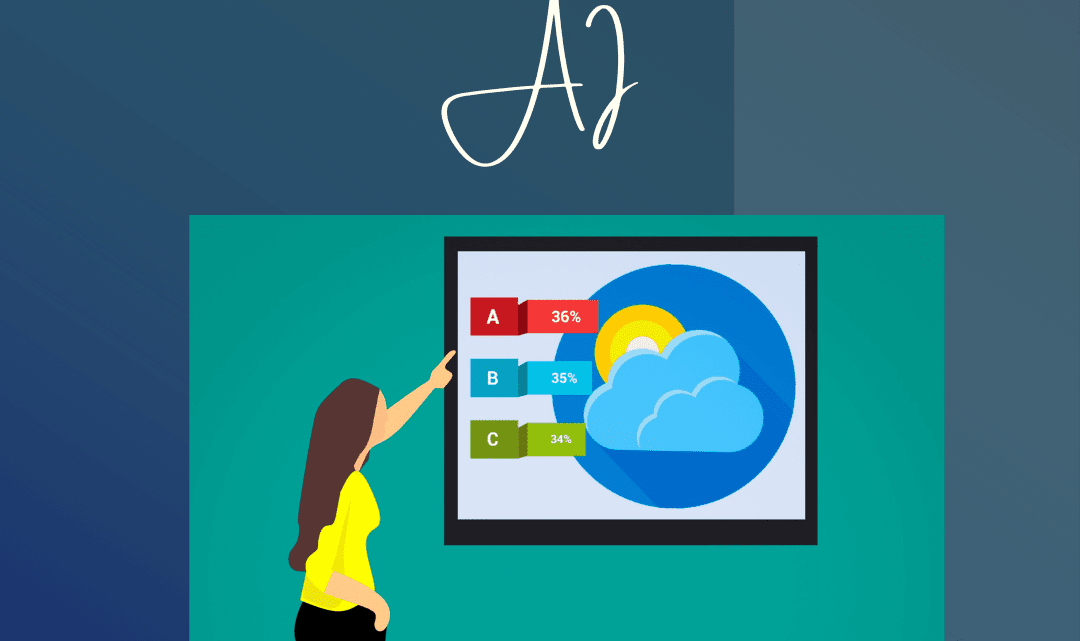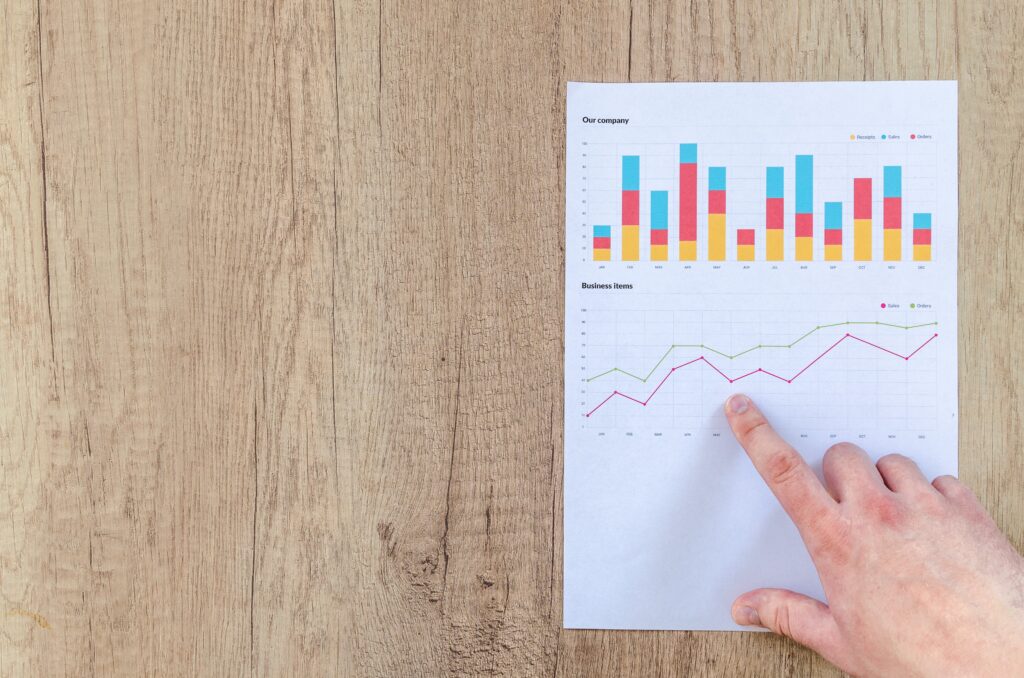Predictive Analytics with AI: How to Make Accurate Predictions
March 20, 2023
Predictive Analytics with AI: How to Make Accurate Predictions. The use of AI in predictive analytics to forecast future trends, identify potential opportunities and optimize marketing campaigns
Predictive analytics is the use of data, statistical algorithms, and machine learning techniques to identify the likelihood of future outcomes based on historical data. By leveraging artificial intelligence (AI), businesses can improve the accuracy of predictive analytics, enabling them to forecast future trends, identify potential opportunities, and optimize marketing campaigns. Here are some of the ways that AI can be used in predictive analytics

Predictive Analytics with AI – Data Collection and Analysis
AI can analyze vast amounts of data from a variety of sources, including social media, website activity, and purchase history, to identify patterns and trends. This information can be used to predict future trends and identify potential opportunities. By collecting and analyzing data in real-time, businesses can respond quickly to changes in customer behavior and stay ahead of the competition.
In today’s digital age, data collection and analysis are essential for businesses to stay competitive and relevant. AI technology has made it easier for businesses to collect and analyze vast amounts of data from various sources. Let’s take a look at an example of how data collection and analysis can benefit a business:
Suppose a clothing company wants to launch a new product line, but they’re unsure what styles and colors will be popular. They can use AI to collect and analyze data from various sources, including social media platforms like Instagram, website activity, and purchase history.
Using natural language processing, AI can analyze customer comments and feedback on social media platforms to understand what people are saying about the latest fashion trends, what they’re looking for in clothing, and what colors and styles are popular. The company can also analyze website activity to see which products are frequently viewed and purchased, what search terms customers are using, and which products are most popular in different regions.
By analyzing this data in real-time, the clothing company can quickly identify patterns and trends and use this information to make data-driven decisions about their new product line. For example, if the data shows that there’s a high demand for floral patterns and pastel colors in a specific region, the company can create products that cater to that demand. They can also adjust their marketing strategy to target customers who are most likely to be interested in their new product line.
Overall, data collection and analysis using AI technology can help businesses make informed decisions, identify potential opportunities, and stay ahead of the competition by quickly responding to changes in customer behavior
Predictive Analytics with AI – Machine Learning
AI-powered machine learning algorithms can learn from past data to predict future outcomes. By analyzing historical data, machine learning algorithms can identify patterns and trends that may not be immediately apparent to humans. This can be valuable in predicting customer behavior, identifying potential opportunities, and optimizing marketing campaigns.
Machine learning is a subfield of AI that focuses on developing algorithms that can learn from data and make predictions based on that data. Machine learning algorithms are used in a wide range of applications, including customer behavior prediction, fraud detection, and image recognition.
Let’s take an example of how machine learning can help businesses predict customer behavior:
Suppose a large online retailer wants to predict which customers are most likely to make a purchase in the next month. The retailer can use machine learning algorithms to analyze historical data, such as past purchases, browsing behavior, and demographic information, to identify patterns and trends that may indicate a customer’s likelihood of making a purchase.
The machine learning algorithm can analyze thousands of data points for each customer and use this information to create a predictive model. This model can then be used to score each customer based on their likelihood of making a purchase in the next month.
The online retailer can use this information to optimize their marketing campaigns by targeting customers who are most likely to make a purchase. For example, they can send targeted email campaigns or personalized recommendations to customers who have a high probability of making a purchase.
In addition to predicting customer behavior, machine learning can also help businesses identify potential opportunities. For example, by analyzing data from social media platforms, machine learning algorithms can identify trends and patterns that may indicate a new market or product opportunity.
Overall, machine learning algorithms can help businesses make data-driven decisions, optimize their marketing campaigns, and identify potential opportunities by analyzing vast amounts of historical data and predicting future outcomes.

Predictive Analytics with AI – Predictive Modeling
AI can be used to create predictive models that forecast future outcomes based on historical data. These models can be used to identify potential opportunities, such as new markets or customer segments, and optimize marketing campaigns. By using predictive models, businesses can make more informed decisions about product development, sales forecasting, and marketing strategies.
Predictive modeling is a technique used in data analysis that uses historical data to forecast future outcomes. AI-powered predictive modeling can analyze large amounts of data to identify patterns and trends that may not be immediately apparent to humans. This can be valuable in identifying potential opportunities and optimizing business strategies.
Let’s take an example of how predictive modeling can help a business:
Suppose a healthcare company wants to forecast the number of patients they will have in the next quarter. The company can use predictive modeling to analyze historical data, such as past patient numbers, demographic information, and health trends, to create a predictive model.
The predictive model can analyze thousands of data points and use this information to forecast the number of patients the healthcare company will have in the next quarter. The company can then use this information to optimize their staffing levels, resources, and budget for the upcoming quarter.
Predictive modeling can also help businesses identify potential opportunities. For example, a retail company can use predictive modeling to analyze historical sales data and identify patterns and trends that may indicate a new market or customer segment. The company can then use this information to develop new products or marketing campaigns that cater to this new market or customer segment.
Overall, predictive modeling using AI technology can help businesses make more informed decisions about product development, sales forecasting, and marketing strategies by analyzing historical data and forecasting future outcomes.
Predictive Analytics with AI – Personalization
AI can be used to personalize marketing campaigns based on customer behavior and preferences. By understanding what motivates their customers, businesses can create personalized marketing campaigns that resonate with each individual. This can lead to increased engagement and conversions, as customers feel like they are being understood and catered to.
Personalization is an essential aspect of modern marketing. AI-powered personalization can analyze vast amounts of data, including customer behavior and preferences, to create personalized marketing campaigns that cater to each individual customer. Personalized marketing campaigns are more effective in engaging customers, increasing customer loyalty, and driving sales.
Let’s take an example of how AI can be used to personalize marketing campaigns:
Suppose a retail company wants to increase sales of a new product line. The company can use AI-powered personalization to create personalized marketing campaigns that cater to each customer’s preferences and behavior.
Using data from past purchases, browsing history, and demographics, the AI-powered personalization algorithm can create a profile for each customer. This profile can include information about the customer’s preferences, interests, and behavior, which can then be used to create personalized marketing campaigns.
For example, a customer who has purchased sports equipment in the past may receive personalized recommendations for the new sports equipment product line. On the other hand, a customer who has previously purchased clothing may receive personalized recommendations for the new clothing product line.
By creating personalized marketing campaigns, businesses can increase customer engagement and loyalty. Customers feel more understood and catered to, which can lead to increased sales and revenue.
Overall, AI-powered personalization can help businesses create personalized marketing campaigns that resonate with each individual customer. By understanding what motivates their customers, businesses can create marketing campaigns that are more effective in engaging customers and driving sales.

Real-Time Insights
AI can provide businesses with real-time insights into customer behavior, allowing them to adjust their marketing campaigns on the fly. This can be extremely valuable in responding to changes in customer behavior and staying ahead of the competition.
Real-time insights refer to the ability to analyze and interpret data as it is generated, providing businesses with real-time information on customer behavior. AI-powered real-time insights can analyze vast amounts of data from a variety of sources, including social media, website activity, and purchase history, to identify patterns and trends in real-time.
Let’s take an example of how AI can provide real-time insights to businesses:
Suppose a retail company has launched a new marketing campaign for a product line, but the response from customers is not as expected. The company can use AI-powered real-time insights to analyze customer behavior and adjust the marketing campaign on the fly.
By analyzing data from social media, website activity, and purchase history, the AI-powered real-time insights algorithm can identify patterns and trends in customer behavior. If the algorithm detects that customers are not responding positively to the new marketing campaign, it can alert the business in real-time.
Based on this real-time information, the business can quickly adjust its marketing campaign to better resonate with customers. This could involve changing the messaging or the channels used to promote the product line.
By responding quickly to changes in customer behavior, businesses can stay ahead of the competition and better meet the needs of their customers.
Overall, AI-powered real-time insights can provide businesses with valuable information on customer behavior in real-time. By analyzing this information, businesses can adjust their marketing campaigns on the fly, responding quickly to changes in customer behavior and staying ahead of the competition.
Conclusion
In conclusion, the use of AI in predictive analytics can help businesses forecast future trends, identify potential opportunities, and optimize marketing campaigns. By leveraging AI-powered tools and techniques, businesses can collect and analyze data in real time, use machine learning algorithms to identify patterns and trends, create predictive models, personalize marketing campaigns, and gain real-time insights into customer behavior. As AI continues to evolve and become more accessible, its role in predictive analytics is likely to become even more significant, leading to further transformation in the marketing industry
Content Creation with AI & Optimization: How to Do it?
Blogging Mastery: The Ultimate Guide to Launching, Scaling and Monetizing Your Blog in Record Time


